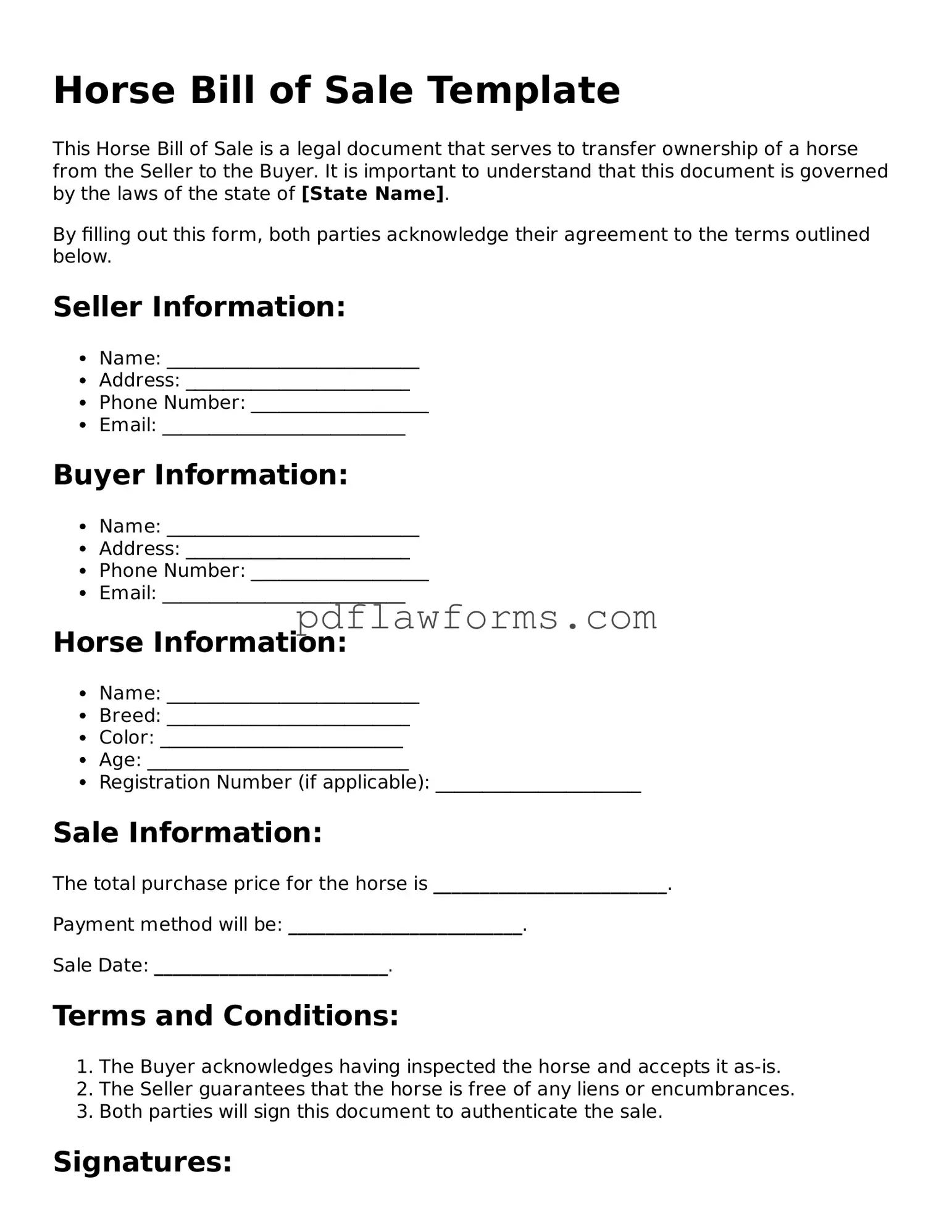When it comes to buying or selling a horse, filling out the Horse Bill of Sale form is a crucial step. However, many people make common mistakes that can lead to confusion or even legal issues down the line. Understanding these pitfalls can help ensure a smooth transaction.
One frequent mistake is failing to include all necessary details about the horse. Buyers and sellers should provide essential information such as the horse's name, breed, age, and registration number if applicable. Omitting these details can create ambiguity and complicate future ownership claims.
Another common error is not accurately recording the sale price. The form should clearly state the amount agreed upon by both parties. If the price is left blank or incorrectly noted, it may lead to disputes regarding payment or ownership rights later on.
Many individuals also overlook the importance of both parties signing the document. A Horse Bill of Sale is not legally binding unless it is signed by both the seller and the buyer. Without these signatures, the transaction may not hold up in a legal context.
Additionally, some people forget to include the date of the sale. This detail is essential for establishing the timeline of ownership. If a dispute arises, having a clear date can help clarify who owned the horse at any given time.
Another mistake involves failing to provide a clear description of the horse's condition at the time of sale. Sellers should be honest about any known issues or health concerns. This transparency protects both parties and helps prevent misunderstandings after the sale.
Lastly, some individuals neglect to keep a copy of the completed form. It is vital for both the buyer and seller to retain their own copies for future reference. This documentation can be invaluable if questions about the sale arise later.
By avoiding these common mistakes, buyers and sellers can ensure that their Horse Bill of Sale is complete and legally sound. Taking the time to carefully fill out this important document can save both parties from potential headaches in the future.
